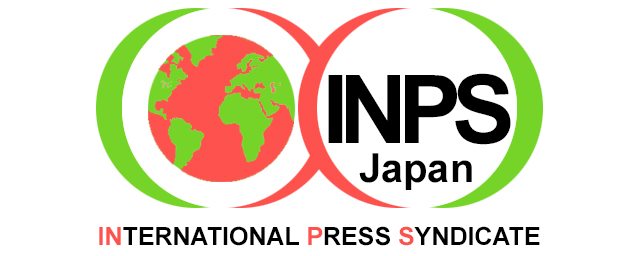Viewpoint by Jonathan Power
LUND, Sweden (IDN) — When the United Nations pulled its troops out of the Congo, a country the size of western Europe, in June 1964, Secretary General U Thant reported, “The UN cannot permanently protect the Congo from internal tensions and disturbances created by its own organic growth towards unity and nationhood”.
That was some kind of relief for UN soldiers after a peacekeeping operation that nearly tore apart the UN and claimed the life of U Thant’s predecessor, Dag Hammarskjold, who died in an air crash (whose cause is still unresolved) while flying from one end of the country to the other.
Yet the UN did bring a measure of peace to the Congo in the sense that it ended a civil war fought over the succession of the mineral-rich province of Katanga and provided an alternative to what was in danger of becoming an East-West grab for influence that threatened to turn the Congo into a major Cold War battleground. But beneath the surface still ran—and runs to this day—the issues of tribalism and mineral exploitation.
Once again, for the nth time, eastern Congo has become a maelstrom. The UN says the Congo has the biggest food crisis in the world, although only 10% of its arable land is cultivated. 5 million people are internally displaced. But just writing “once again” resurrects the memory of the large-scale fighting that occurred in the late 1990s.
Susan Rice, then the U.S. assistant secretary of state for Africa, warned that the fighting might become the continent’s “first world war”, as Zimbabwe, Namibia, Angola and Chad pitched in on the side of the beleaguered president, Laurent Kabila, and Rwanda and Uganda supported the rebels. Again, the UN stepped in. And again, a form of peace was fashioned.
No, what should worry us is not that the Congo is going to become the locus of Africa’s first world war—the UN presence did blunt that eventuality, and its size was small if compared with the actual first world war. But rather how does Africa get to grips with its age-old problem of tribalism, that has produced war for centuries and, given the artificial state boundaries bequeathed by the colonial powers, is now the possessor of a built-in recipe for continuing conflict?
The genocide in Rwanda in 1994 was African tribalism in its most extravagantly destructive form. In the Congo it has not come to that, despite the decades of warfare. Indeed, under strong man, the late Mobuto Sese Seko, who laid the country economically bare, it was reasonably quiescent, such were his extraordinary powers of manipulation and political balance. Only in the final effort to bring him down were tribal fault lines played upon successfully by the contenders for power.
But if we are going to discuss the problems and pitfalls of tribalism, we must first understand its strengths. If it is the gunpowder that can blow peoples apart it is also the glue that holds ordinary society together. It lives and breathes in everyday life. In ordinary village (and in much urban) life tribalism operates like free-masonry or the old school tie: helping each other along with jobs and introductions, sharing the burden of harvest, resolving disputes, whether matrimonial or material and, not least, fashioning art and music in a distinctive form.
It is only when these virtues mutate into a virulent, spare-no-quarter contagion, that the wrong tribal scar or nose shape becomes a death warrant. This is what has happened in the Congo.
It is now a truism that the old colonial boundaries ignored the mosaic of tribal loyalties. But what is done is not easily undone, as the first post-independence leaders recognised with their writing into the charter of the Organisation of African Unity the sanctity of these boundaries. But even if Africa is not to be broken down into its 800 tribal constituencies some reform of these boundaries is obviously necessary.
It can be done by amicable divorce, as Ethiopia at one time appeared to demonstrate. After the overthrow of the murderous dictator, Mengistu Haile Mariam, (who in turn had overthrown the traditional emperor, Haile Selassie), the Eritreans went their own way, with what appeared to be the most civilized of transitions. There was a referendum, there was a pause for reflection and then both sides agreed on a timetable for separation. Tragically, six years on they nonetheless had a border dispute, which continues. We optimists were proved wrong. War between them has continued on and off for decades.
A more positive and lasting example was the decision by Nigeria’s democratically elected president, Olusegun Obasanjo, to accept that the question of who owned the oil rich Bokassi peninsula be taken to the International Court for Justice. There had been a long-standing dispute about whether the territory belonged to Nigeria or its neighbour, Cameroon. Nigeria was the occupying government. But when the Court ruled in Cameroon’s favour in 2002 Obasanjo ceded the territory, despite much popular opposition. Both national and tribal passions were aroused and finding a solution had not been easy. But in the end, observance of international law triumphed. An amicable divorce was consummated.
There are really two choices for those parts of Africa besieged by tribal conflict—and that goes for Rwanda (although it is at peace right now), Nigeria, the Sudan, Mali, the Central African Republic and Angola as much as it does for the Congo. To start a civilized divorce, if necessary, with help from neutral outsiders, including the International Court for Justice. Or to build a federal democratic state, as South Africa has done, with much power devolved to the provinces.
The day when the strongman can hold sway from the centre, whether he be malign like Mobuto or benign like the late Tanzanian president Julius Nyerere is all but over. That doesn’t mean it is not tried. It is. But few, except the dictator and his entourage themselves, expect it to succeed. The notions of democracy and human rights have penetrated far and wide in Africa.
Moreover, every foreign investor of worth—including the giant, well padded, oil and mineral companies—knows by now that their investments will end in disaster if the rules of law are not followed and will always think more than twice before risking a major investment. The days when they financed tribal-based guerrilla bands to fight on their behalf are long gone. Over decades their nefarious activities have been exposed by both NGOs and the media to great effect. Some countries have passed legislation to ban so-called “conflict diamonds and minerals”. For example, eighteen months ago, the European Union implemented a law restricting the buying of unlawfully produced minerals.
There is still a need to fight the consequences of the new rush for cobalt and coltan, needed for mobile phones and for super batteries used in electric cars and planes. This rush seems to be in danger of re-creating the robber-baron mentality of the 1960s, but this time organised on a smaller, less-easy-to-police, scale with tribal and militia chiefs using artisanal labour, paid a dollar a day, and exporting the product by clandestine routes.
We have yet to reach U Thant’s “organic growth” concept for the Congo, set out 60 years ago. We can easily blame the dreadful policies of the Belgians in the colonial period and the Americans afterwards who supported Mobuto in return for his allegiance during the Cold War. But that doesn’t help sort out the Congo’s problems today, even though the Belgians and Americans are clearly at fault for creating the modern mess.
What the answer is, is probably the most difficult question in Africa, apart from how to keep honesty in government and political stability in South Africa. The European Union and the African Union, working together, must take on the responsibility for finding an answer. The Congo has to be given more attention, not less.
About the author: The writer was for 17 years a foreign affairs columnist and commentator for the International Herald Tribune, now the New York Times. He has also written many dozens of columns for the New York Times, the Washington Post, the Boston Globe and the Los Angeles Times. He is the European who has appeared most on the opinion pages of these papers. Visit his website: www.jonathanpowerjournalist.com [IDN-InDepthNews — 26 July 2022]
Photo: Charline (left), 11, fled her village because of recent armed clashes in North Kivu province, DR Congo. She has taken refuge with her family in a camp for displaced people called Kiwandja in Rutshuru territory. ©UNICEF/Jean-Claude Wenga


